Inside the escape from a Ukraine border village as Putin’s forces closed in: ‘Mummy, when will this war end?’
A family of refugees now living in the city of Kharkiv recount to Tom Watling the horrifying story of their last-minute evacuation as Russian soldiers approached
Your support helps us to tell the story
From reproductive rights to climate change to Big Tech, The Independent is on the ground when the story is developing. Whether it's investigating the financials of Elon Musk's pro-Trump PAC or producing our latest documentary, 'The A Word', which shines a light on the American women fighting for reproductive rights, we know how important it is to parse out the facts from the messaging.
At such a critical moment in US history, we need reporters on the ground. Your donation allows us to keep sending journalists to speak to both sides of the story.
The Independent is trusted by Americans across the entire political spectrum. And unlike many other quality news outlets, we choose not to lock Americans out of our reporting and analysis with paywalls. We believe quality journalism should be available to everyone, paid for by those who can afford it.
Your support makes all the difference.Nine-year-old Sasha rushed down to the basement as Russian-launched drones buzzed in the sky above him. He was terrified, shivering as he desperately tried to block out the noise of the “Shaheds”, the Iranian-designed drones that have become a deadly feature of Vladimir Putin’s invasion.
The boy was living with his mother and five siblings in the village of Zakharivka, just a few miles from the Russian forces advancing across the border into Ukraine’s northeastern Kharkiv region. The region has been the scene of intense fighting for weeks.
This was five days after the Russian attack had started in the middle of May. Poor defensive fortifications and severed communication lines, the result of Russian signal jammers, had caught Ukraine’s forces off guard. Moscow’s troops had then pushed rapidly across the border.
The rising sound of Russian shells, getting closer by the hour, had panicked the thousands of civilians who suddenly found themselves in the way of this attack, while the green fields around them quickly turned a muddy black from the explosions of rockets.
Becoming more agitated and shaky by the minute, Sasha turned to his mother, Valentyna, and said: “Mummy, when will this war end?”
“Where are we going to go?” the little boy added, wiping away his tears. Valentyna was aware that she needed to get all her children, Mykyta, 18, Tetiana, 10, Sasha, Iaroslav, eight, Angelina, six, and two-year-old Matviy to safety.
An order had come through from local officials to leave at once. Ukrainian reinforcements were coming but it was unclear when they would arrive – and no-one knew then how far Putin’s forces would push into the region.
Valentyna called volunteers that she knew were doing evacuations. She pleaded with them to help but they said they wouldn’t be able to reach them for several days.
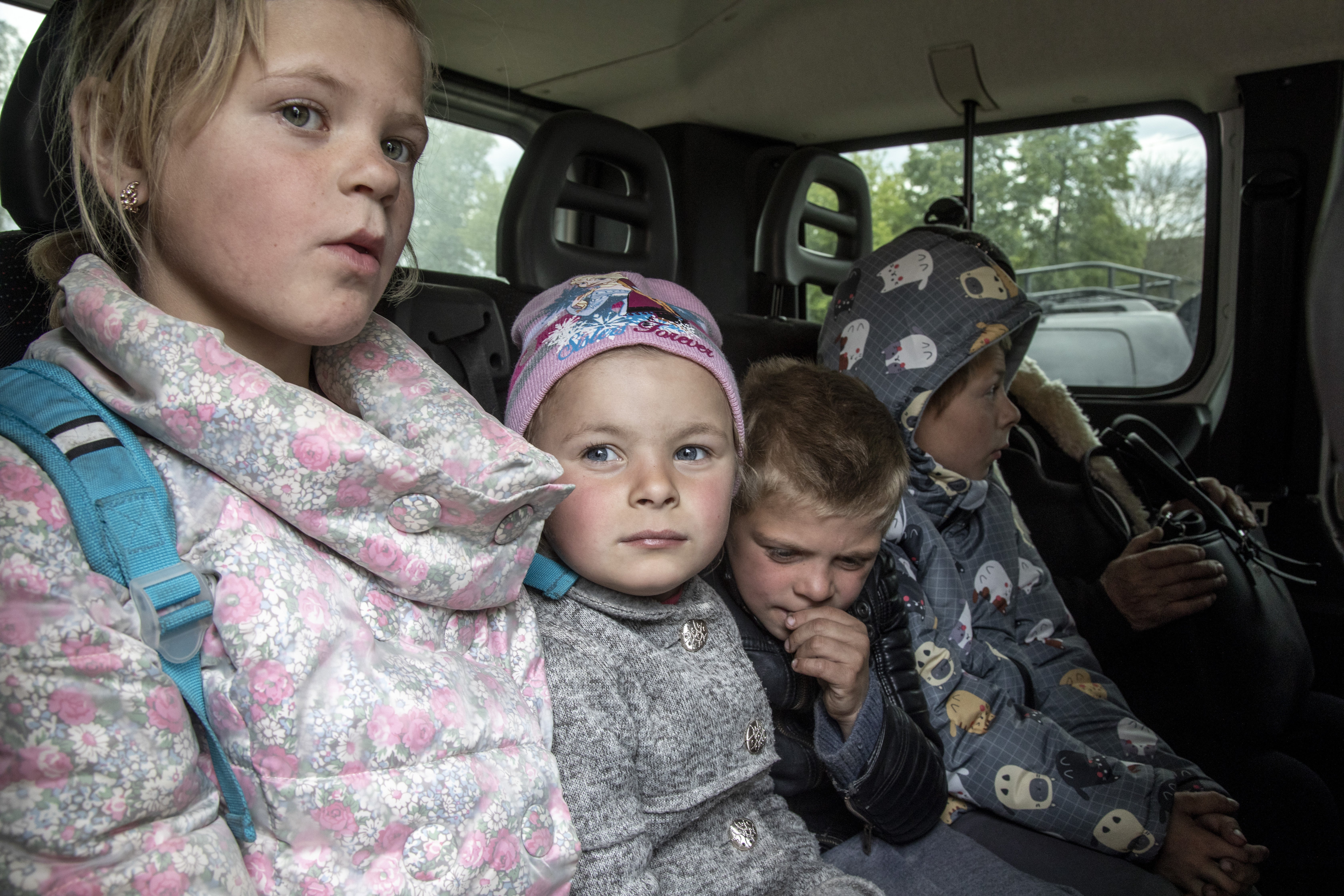
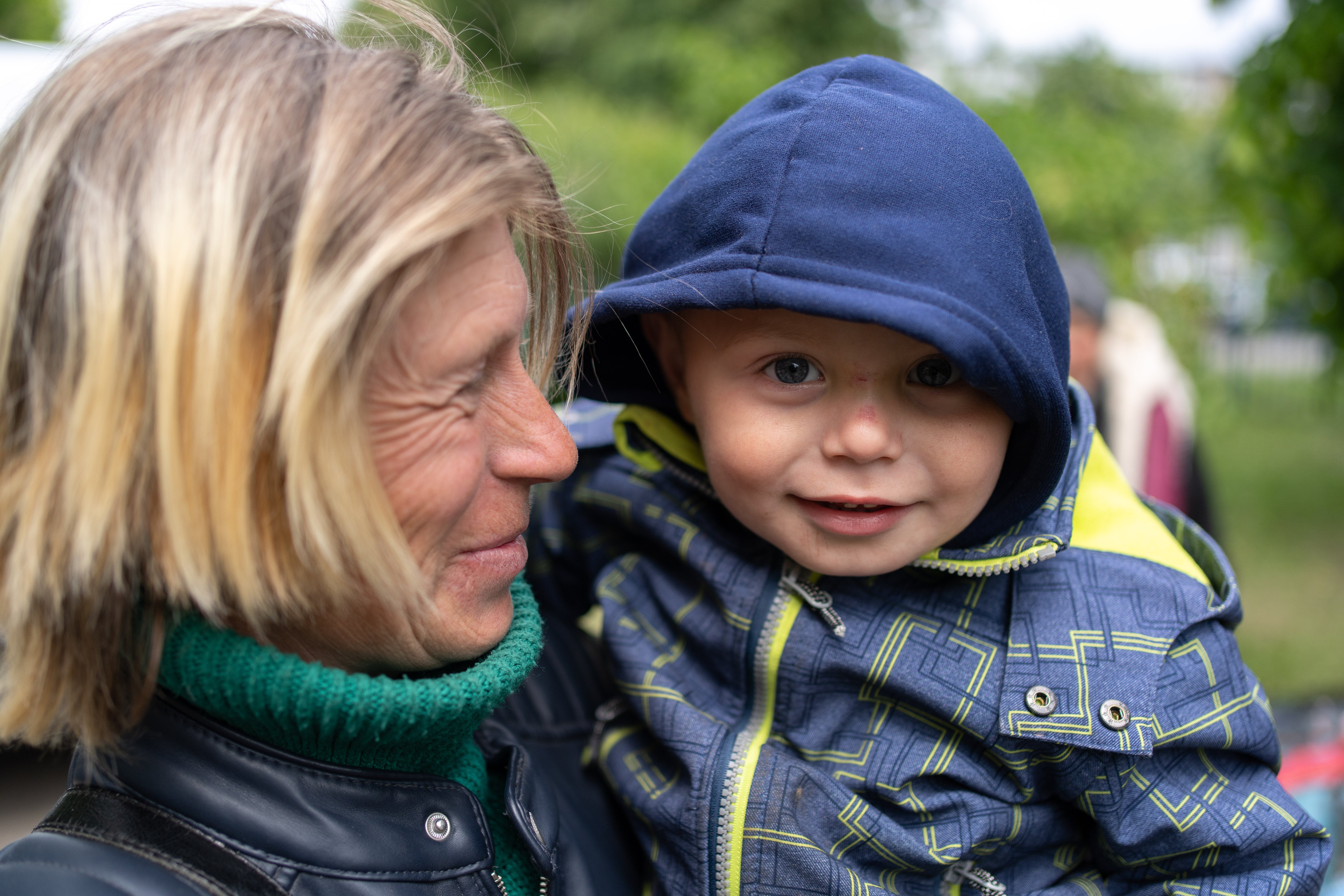
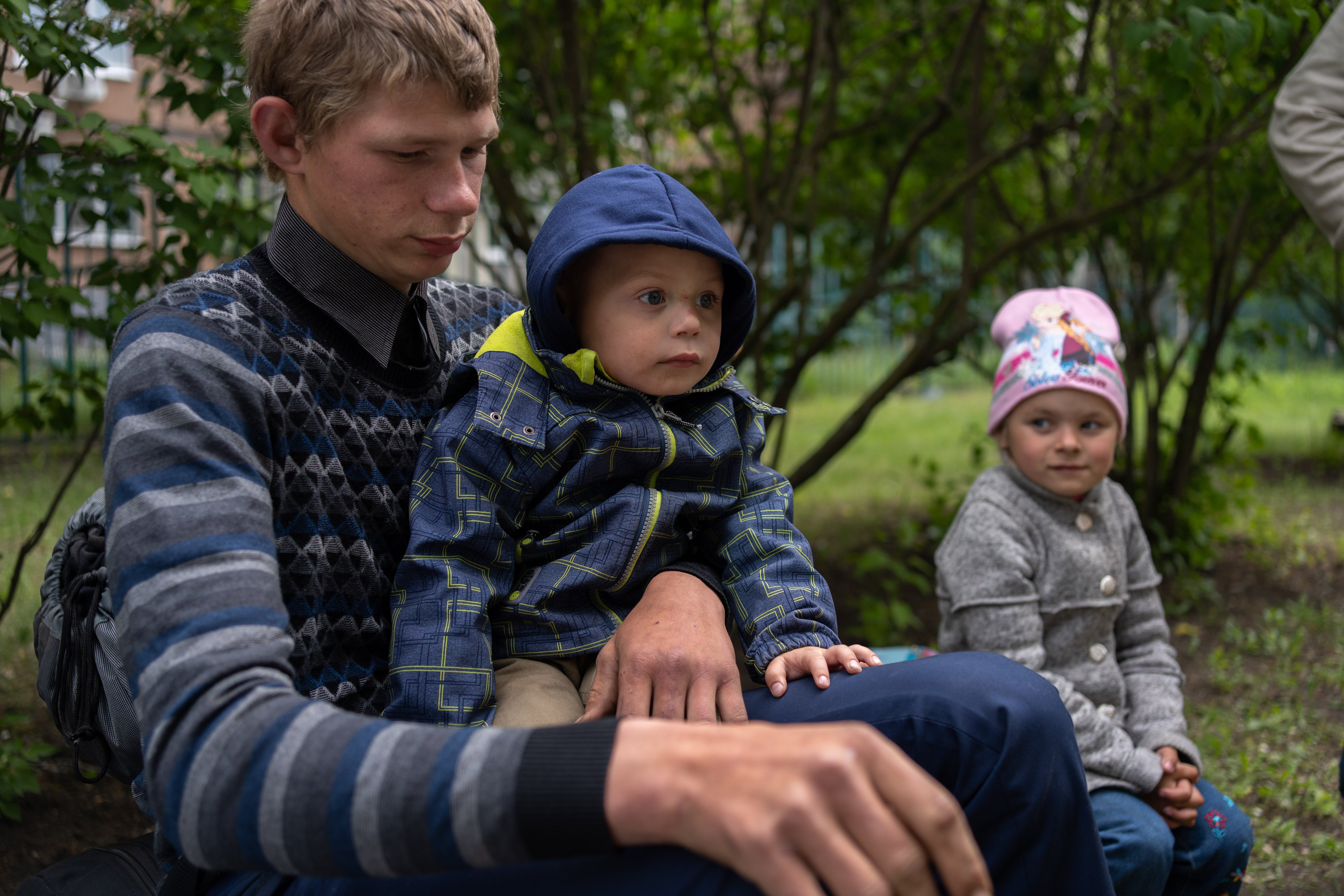
The shelling was non-stop and Russian drones were following all vehicles, regardless of whether they were civilian or military, around the area. The aid workers said it was too dangerous to come and rescue them at that time, but that they would try to come in a few days.
Valentyna called another group of volunteers. When they heard six children were in the house, they told her they were coming immediately. There were 26 children in total in Zakharivka. Not everyone left that day.
Half an hour after Valentyna’s phone call, the family were cramming into a minibus, rushing towards Kharkiv city itself, some 40 miles away on roads potholed by artillery fire from Russian forces. The sound of shelling receded as they drove.
“Those volunteers risked their lives to help us leave our village,” Valnetyna said, speaking after they reached Kharkiv. “And I am so grateful.”
More than 14,000 Ukrainians have been forced to evacuate the Kharkiv region near the border since Russia launched its attack last month. Moscow’s troops now occupy around 67 square miles of extra territory, according to Ukrainian war tracker DeepState.
Whole towns, like Vovchansk, just a few miles from Zakharivka and partially occupied by Russian forces, have been turned into a wasteland of missile debris and destroyed buildings, while the majority of humanitarian missions into the area to help those that stayed behind have ceased. It is simply too dangerous to reach them.
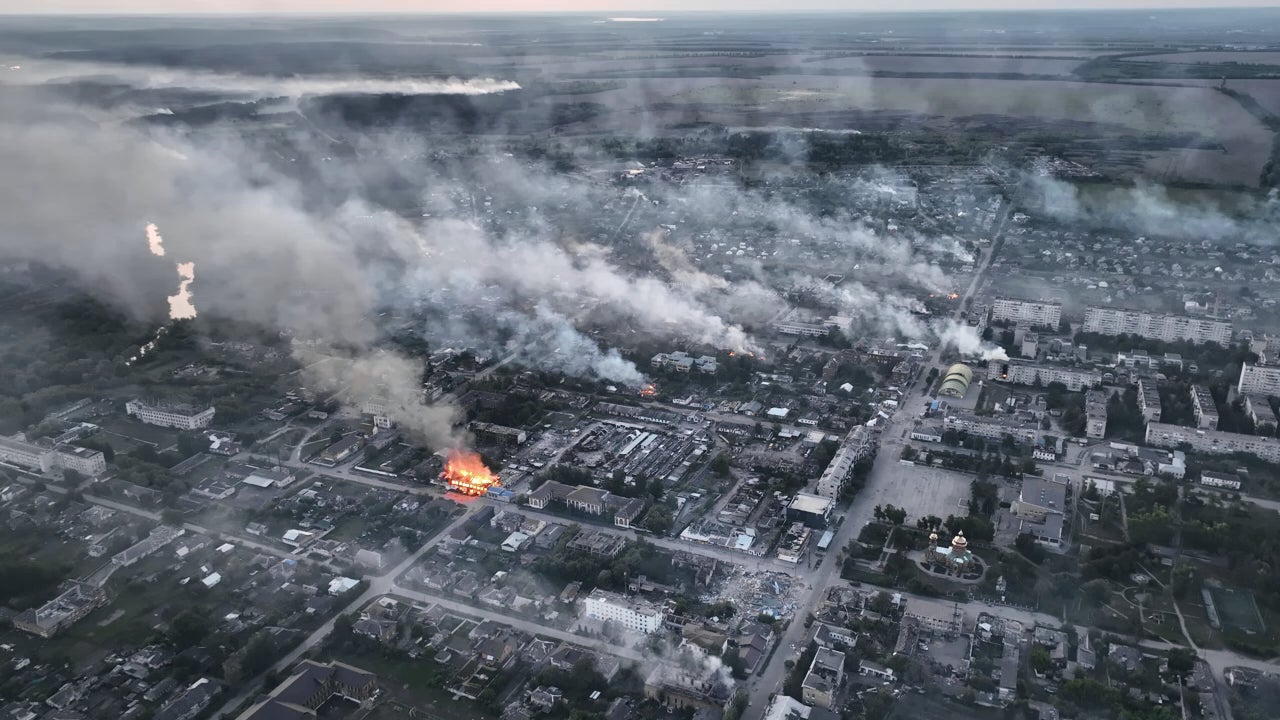
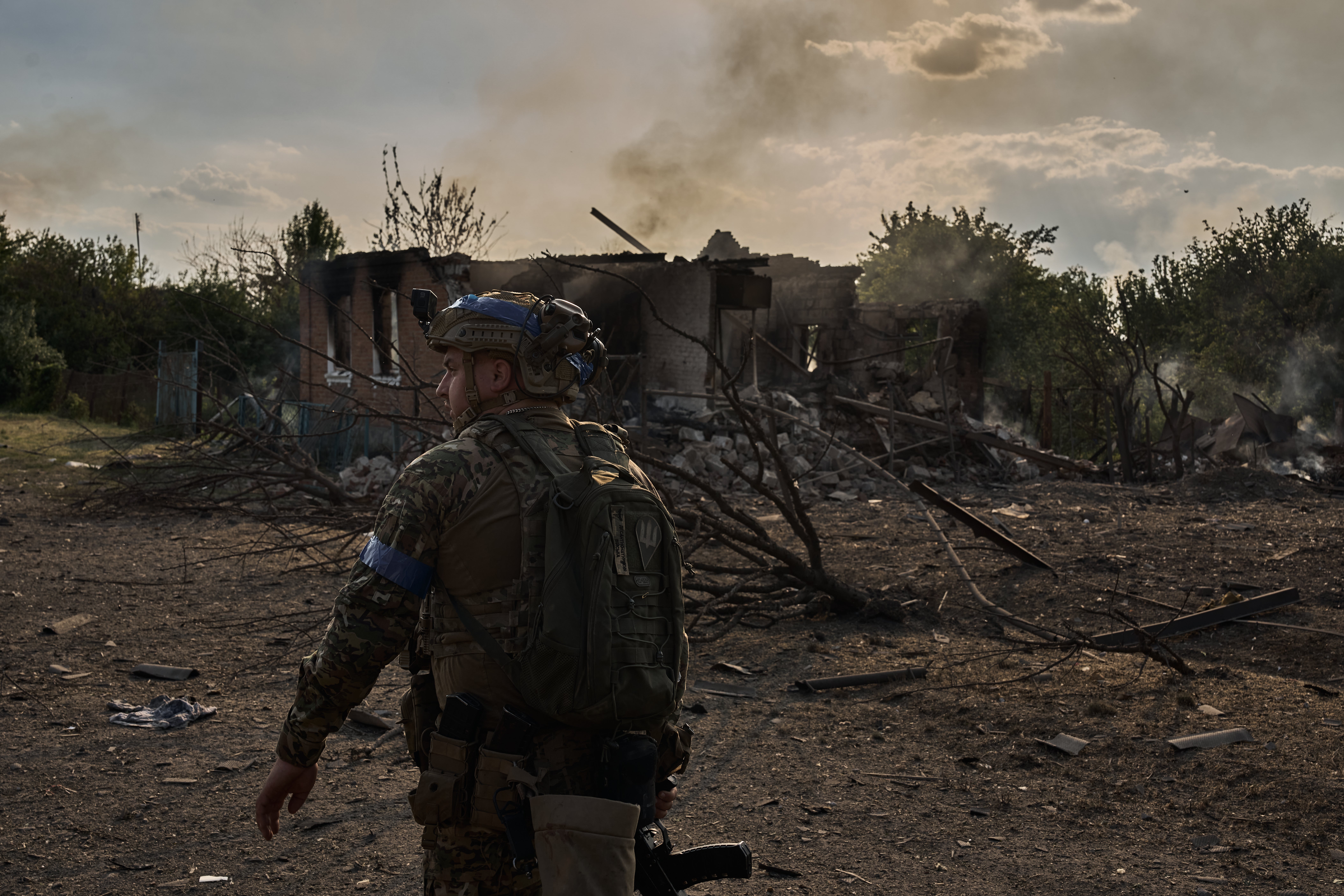
The assault has also brought Russian forces within 20 miles of the city of Kharkiv itself, home to around 1.3 million civilians and about half of all the evacuees from the wider region, now including Valentyna and her family. The relentless shelling of the city by Moscow’s forces has only picked up in intensity, killing dozens of civilians every week.
Ukrainian military officials say the frontline has been stabilised but fighting is continuing and the threat of an offensive on the region’s capital remains, although Russian forces would be hard pressed to successfully carry out such a large-scale assault. Nevertheless, the threat of such an attack has forced Ukraine to station reinforcements in front of the city, potentially drawing them away from key battles further east.
For Valentyna and her family, there is some respite in Kharkiv. Andrii Semenko, a senior child protection officer for the International Rescue Committee humanitarian aid organisation, was there to receive the family when they arrived at a transit centre for helping evacuees in Kharkiv.
Around 12,800 people have come through this centre, the only one of its kind, since 10 May, when the Russian attack began. There, evacuees can spend a day or two with psychological support teams before being transferred to buildings known as collective sites, which are a more permanent residence. Often they are university dormitories or similar sites.
“I just remember the children were very frightened,” Mr Semenko said. “They were distressed and confused as to where they were. They were just standing there in the middle of the courtyard looking around. They didn’t know where to go or what to do.”
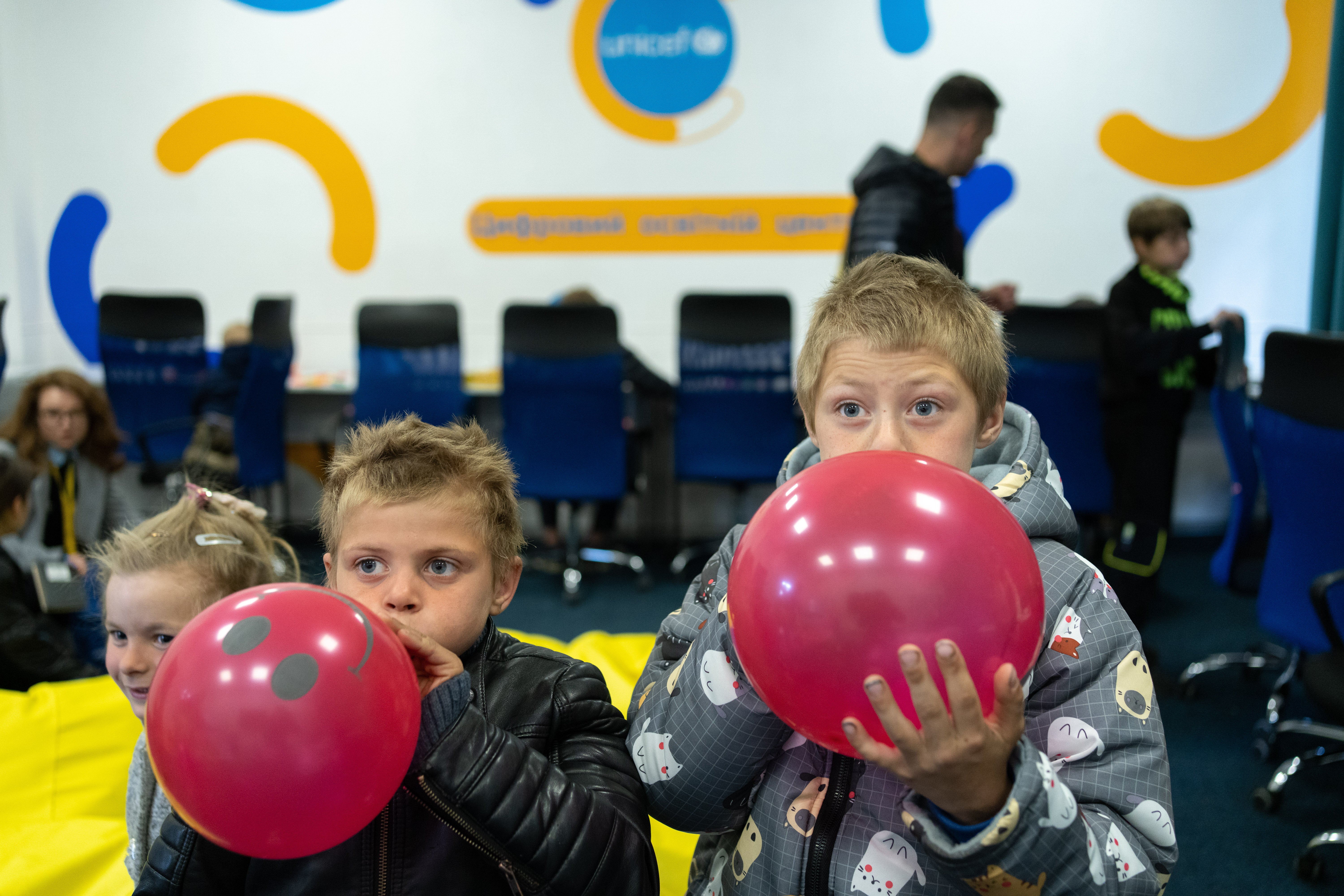
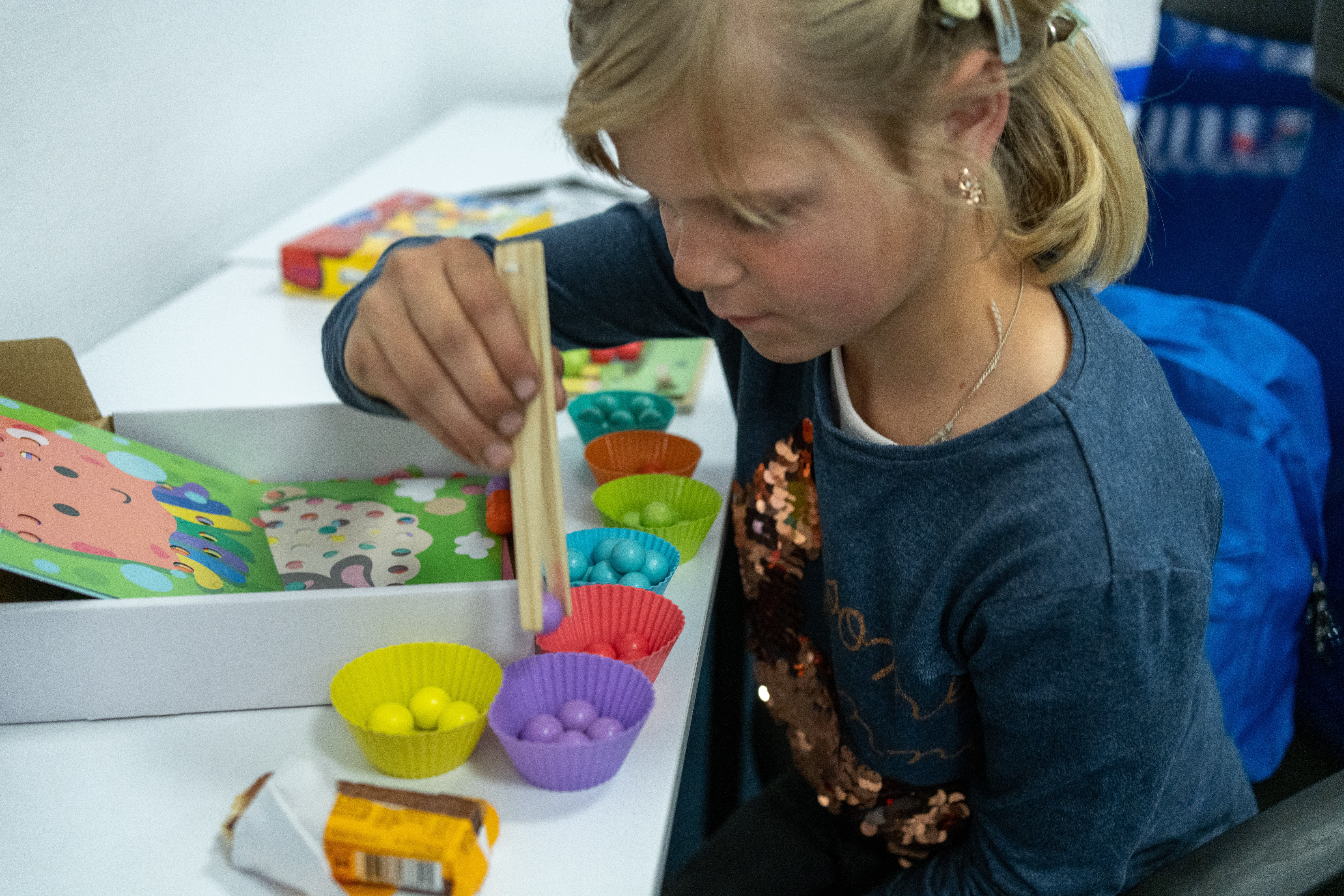

Images shared by Unicef, the agency that helps run the transit centre, showed the children playing throughout the day, gradually overcoming a sense of shock at the events of that morning.
Just after 5pm, a driver from Rescue came into the playroom to take the family to a collective site that had space for them.
He picked up two-year-old Matviy and began throwing him in the air to make him laugh. Valentyna said the toddler, who has only known Russia’s invasion, is usually a “calm” and quiet child, but the little boy began laughing with all his heart.
The whole room, previously quiet, then broke into a strange kind of communal laughter.
Since moving to the collective site, Valentyna said her family are coping better than they were in Zakharivka. “The children were so glad to see Ukrainian helicopters,” she said. “They are more joyful, more chatty. Their mental state is much better.”
But she added that she still has to “stop them from going outside” because drones and missiles land on Kharkiv daily.
“Just yesterday, there were Shaheds flying over the city,” she said, adding that the children often become aggressive and unnerved when they see or hear the Iranian-made drones. It is a common symptom of many young Ukrainians subjected to the constant torture of long-range Russian drone attacks.
And Valentyna’s sister, as well as her two brothers-in-law, remain in Zakharivka. When asked if she feared for their safety, Valentyna quietly began to cry, wiping away the tears with a trembling hand.
“I am so scared for them,” she said. “At any moment, the Russians can get through. I don’t want them to get killed. I want them to leave.”
Behind her, Sasha and Iaroslav could be seen playing with a purple balloon. At least some of her family, she said, are safe and sound, even if the bombs are still falling around them.

Join our commenting forum
Join thought-provoking conversations, follow other Independent readers and see their replies
Comments